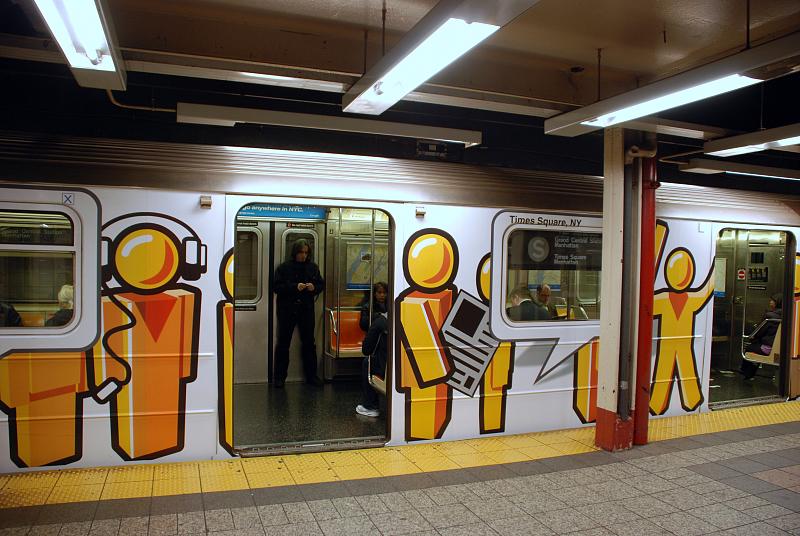Every now and then, the roll signs indicating a subway route are wrong. I often see an Orange Q, a remnant of the Manhattan Bridge work, instead of a Yellow Q bullet as the trains head past me. That is, generally, the most egregious of minor errors.
Earlier this week, Second Ave. Sagas reader Jeffrey P drew my attention to the above sign on a Manhattan-bound 1 train. The 1, which shares rolling stock with the 3 and 4, was mislabeled but not as a train in service. It was bulleted as a 13 train. It certainly piqued my curiosity.
In the annals of New York City subway history, the only train designated by the number 13 was the pre-1967 BMT 14th St./Canarsie Line, now better known as the L train. At no point did the IRT lines — today’s current numbered lines — make use of a 13. Maybe one day, the future holds a red 13 for New York City straphangers.
Jeffrey sent me this picture via Twitter. For another view of this mysterious 13 train, click here. Be sure to check out and follow Second Ave. Sagas on Twitter if that’s your thing.


 Now and then, I like to see what’s happening in transit systems outside of New York City. Often, I’ll turn to Washington, D.C., for a glimpse at what an efficient — and much smaller — transit system looks like. The lessons from D.C. can be illuminating as we watch the MTA carom from one ill-fated project to another.
Now and then, I like to see what’s happening in transit systems outside of New York City. Often, I’ll turn to Washington, D.C., for a glimpse at what an efficient — and much smaller — transit system looks like. The lessons from D.C. can be illuminating as we watch the MTA carom from one ill-fated project to another. 
 When I’m waiting for a train, I’ll often take a look at the rubber bumper along the edge of the subway platform. Generally, I don’t like what I see. The bumpers are in various states of erosion, and sometimes the boards are visibly loose or just not there.
When I’m waiting for a train, I’ll often take a look at the rubber bumper along the edge of the subway platform. Generally, I don’t like what I see. The bumpers are in various states of erosion, and sometimes the boards are visibly loose or just not there. 
